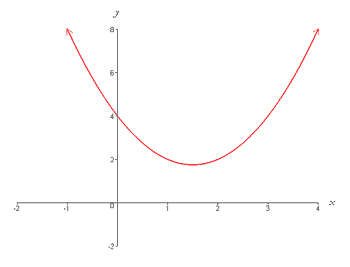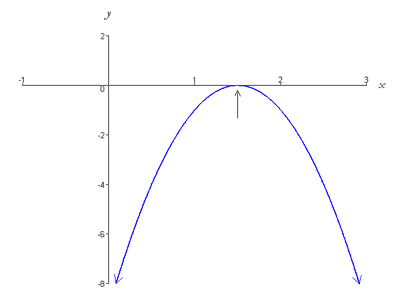
Discriminant
What is the discriminant?
-
Discriminant is written as d=b^2-4ac.
-
It is the part of the quadratic formula that is inside the square root.
3 rules
-
If the discriminant is greater than 0, than there are two x-intercepts.
-
If the dicriminant is smaller than 0, than there are no x-intercepts (whether the parabola starts above the x-axis, and moves up, or it starts below the x-axis and moves down).
-
If the discriminant is equal to 0, than there is one x-intercept (the parabola starts on the x-axis, meaning the x-intercept is the vertex of the parabola).
This formula d=b^2-4ac can help us to quickly find out the value inside the square root, and help us to know about the x-intercepts, informing us if we should solve further or not.
Let's try an example!
0=3x^2+4x+5
-
3 is the "a" value.
-
4 is the "b" value.
-
5 is the "c" value.
-
Use the formula d=b^2-4ac
-
Substitute the values.
-
d=4^2-4(3)(5)
-
d=16-4(3)(5).
-
d=16-60
-
d=(-44).
-
The "d" is smaller than 0, therefore, we do not have any x-intercepts, therfore, we shall not solve further.
Useful site to gain extra knowledge with pictures and information-http://www.purplemath.com/modules/quadform3.htm
Video time!
The discriminant





